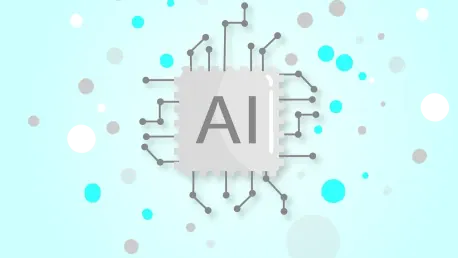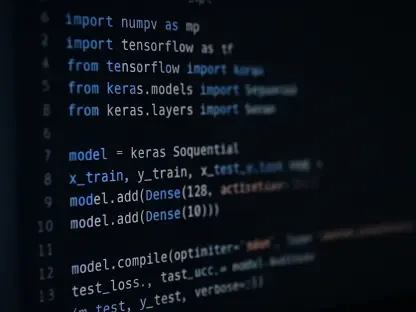In today’s rapidly digitalizing world, software quality assurance and testing have become fundamental in ensuring the reliability and robustness of software systems. As these processes transcend their traditional roles, they address emerging challenges such as cybersecurity, sustainability, and user-centric design. A blend of Artificial Intelligence (AI) and human oversight is at the forefront of this transformation, introducing new paradigms and methodologies in software quality assurance.
The Role of Artificial Intelligence in Software Testing
AI-Driven Testing: Predictive and Adaptive Models
AI-driven testing is revolutionizing the software quality landscape by predicting potential failures and adapting to changes seamlessly. This approach not only optimizes the testing process but also enhances the ability to create intuitive and user-friendly experiences. For instance, Roshan Pinto from Tavant explains that AI-driven testing can automate repetitive tasks, thereby enabling testers to focus on more complex issues, helping to bring products to market faster and with fewer defects.
AI-driven testing tools utilize machine learning algorithms to analyze vast amounts of data and recognize patterns that identify potential failure points or performance issues before they occur. This predictive capability allows teams to address problems proactively, reducing downtime and improving user satisfaction. Moreover, adaptive testing models adjust automatically to changing conditions and requirements, ensuring that the software remains robust and reliable in various scenarios. However, the successful implementation of AI-driven testing requires continuous refinement and human oversight to validate the AI’s decisions and maintain the highest standards of software quality.
AI-Augmented Observability: Real-Time Insights
The rise of AI has naturally led to an increased demand for AI-augmented observability. This trend allows testers to gain real-time insights into system performance and user interactions. Rohit Anabheri from Sakesh Solutions LLC emphasizes how this proactive detection of bugs and performance optimization significantly enhance the efficiency and reliability of software development.
With AI-augmented observability, developers and testers can monitor the software environment continuously and comprehensively, collecting real-time data on application performance, user behavior, and system health. AI algorithms analyze this data to detect anomalies, predict potential problems, and recommend solutions before issues escalate. This proactive approach minimizes system downtime and enhances the user experience by ensuring that any glitches or slowdowns are addressed promptly. Furthermore, AI-augmented observability tools often include automated reporting features, providing teams with detailed insights and actionable data to make informed decisions and drive continuous improvement in software quality.
Human-Centric Testing Methodologies
Accessibility Testing: Legal and Ethical Considerations
Accessibility testing is growing in importance due to legal mandates and corporate social responsibility. Konstantin Klyagin of Redwerk highlights that inclusive design is not just a legal requirement but also a moral imperative, driven by consumer demand and regulatory compliance in regions like the EU, U.K., and U.S.
Accessibility testing ensures that software products are usable by individuals with disabilities, adhering to guidelines such as the Web Content Accessibility Guidelines (WCAG) and region-specific regulations. Beyond legal compliance, investing in accessible design reflects a company’s commitment to social responsibility and inclusivity. Performing thorough accessibility tests allows companies to identify and fix issues that might otherwise exclude potential users, leading to a more equitable digital experience. This effort not only enhances user satisfaction and loyalty but also protects the company from legal challenges and reputational harm. Nevertheless, achieving true accessibility requires a combination of automated tools and human input to fully understand and meet the diverse needs of users.
Shift-Left Security Testing: Early Vulnerability Identification
The shift-left approach in security testing integrates this critical process into the early stages of development. Sarah Choudhary from Ice Innovations notes that identifying vulnerabilities early not only reduces remediation costs but also ensures secure coding practices, thereby resulting in more secure software releases.
Shift-left security testing involves incorporating security assessments throughout the software development lifecycle, starting from the initial design phase. By addressing security concerns early, development teams can identify and mitigate vulnerabilities before they become part of the final product. This proactive approach reduces the risk of security breaches and minimizes the cost and effort required to fix vulnerabilities later in the development process. Additionally, the shift-left methodology fosters a culture of security awareness among developers, encouraging them to design and code with security best practices in mind. Automated security tools, combined with manual code reviews and penetration testing, enhance the effectiveness of this approach, ensuring robust protection against evolving threats.
Testing for Sustainability and Continuous Improvement
Sustainability Testing: Aligning with Global Goals
Testing for sustainability is an emerging trend aimed at ensuring software energy efficiency and minimizing carbon footprints. As Jagadish Gokavarapu from Wissen Infotech puts it, this initiative aligns with global sustainability goals and the corporate responsibility agenda, proving vital as businesses strive for environmentally friendly operations.
Sustainability testing involves evaluating software applications for their energy consumption and environmental impact, considering factors such as CPU usage, memory allocation, and overall system efficiency. By optimizing these elements, developers can reduce the energy required to run their software, contributing to lower carbon emissions and a smaller environmental footprint. Moreover, sustainable software design often includes features that promote energy-saving behaviors among users, further extending the positive impact. This trend reflects a growing recognition that digital solutions must also be ecologically responsible, aligning with broader corporate sustainability initiatives and meeting the increasing demand from environmentally conscious consumers and stakeholders.
Continuous Testing: Integrating Feedback Loops
Continuous testing within continuous integration and continuous delivery pipelines is essential to today’s fast-paced development cycles. Vamsi Krishna Dhakshinadhi from GrabAgile Inc. underscores the importance of real-time feedback and rapid deployment cycles in releasing higher-quality, feature-rich software without compromising on stability.
Continuous testing involves running automated tests at every stage of development, from code commits to final deployment, ensuring that each change is thoroughly validated before moving forward. This approach enables early detection of defects, allowing teams to address issues promptly and maintain a high level of quality throughout the development process. By integrating continuous testing into continuous integration and delivery (CI/CD) pipelines, organizations can achieve faster release cycles without sacrificing the reliability or performance of their software. Real-time feedback loops provide developers with immediate insights into the impact of their changes, fostering a culture of rapid iteration and continuous improvement. This methodology not only accelerates time-to-market but also enhances user satisfaction by consistently delivering robust and innovative software solutions.
Addressing Generative AI and System Resilience
GenAI-Based Testing and Remediation
Generative AI in software development poses new challenges that require proactive testing and flaw remediation. Chris Wysopal from Veracode highlights the necessity of GenAI-based testing to prevent the introduction of new vulnerabilities through fast code generation, ensuring robust software systems.
Generative AI techniques, such as code synthesis and automated code generation, can significantly speed up the software development process. However, these advancements also introduce potential risks, as automated code may contain unforeseen vulnerabilities or inconsistencies. GenAI-based testing aims to mitigate these risks by employing AI-driven tools to analyze and evaluate the generated code for security and performance issues. This proactive testing approach identifies flaws early, allowing developers to address them before they become critical problems. Additionally, AI-based remediation tools can provide automated fixes and suggestions, streamlining the process of resolving identified issues. By leveraging generative AI and AI-driven testing, organizations can accelerate development timelines while maintaining the highest standards of software quality and security.
Chaos Engineering: Testing for System Resilience
Chaos engineering involves introducing controlled failures to evaluate system responses under stress, ensuring reliability in complex distributed systems. Roman Vinogradov from Improvado explains how this practice helps teams build resilient systems capable of withstanding real-world disruptions.
Chaos engineering practices involve deliberately injecting faults and disruptions into a system to observe how it behaves under stress and to identify potential weaknesses. By simulating unexpected failures, organizations can test the resilience and robustness of their infrastructure, ensuring that it can withstand real-world challenges such as hardware failures, network outages, or sudden spikes in usage. This approach helps teams gain a deeper understanding of their system’s behavior and improves their ability to respond to and recover from incidents. Moreover, insights gained from chaos engineering experiments can inform the design and implementation of more robust and fault-tolerant systems, ultimately enhancing the overall reliability and performance of software applications in production environments.
Evolving Testing Practices and Technologies
Automated Regression Testing: Maintaining Stability
Automated regression testing ensures new functionalities do not disrupt existing operations. Josh Dunham from Reveel stresses the importance of this practice in maintaining the stability of software in service-driven models, allowing for smooth and continuous operation.
Regression testing involves re-running a suite of tests on modified software to ensure that recent changes have not adversely affected existing functionality. Automated regression testing leverages tools and scripts to perform these tests efficiently and consistently, allowing teams to identify and resolve issues quickly. This practice is particularly critical in service-driven models, where maintaining uninterrupted service and consistent user experiences is paramount. By automating regression tests, organizations can ensure that updates, enhancements, or bug fixes do not introduce new problems, preserving the stability and reliability of the software. Additionally, automated regression testing supports continuous delivery by enabling rapid validation of changes, facilitating frequent and reliable software releases.
Specialized Training for QA Engineers
As software complexity increases, so does the need for specialized training for QA engineers. Rodion Telpizov from SmartJobBoard argues that a deep understanding of technology and user context is crucial for QA teams to create comprehensive test cases, thereby enhancing reliability and user satisfaction.
Effective QA practices require engineers to possess in-depth knowledge of the technologies used in software development, as well as an understanding of the specific needs and expectations of end-users. Specialized training programs can equip QA professionals with the skills and expertise needed to design and execute thorough, context-aware test cases. This training often includes advanced topics such as automation frameworks, AI in testing, security testing, and performance optimization. By investing in the continuous education and development of QA teams, organizations can ensure that their testing processes remain up-to-date with industry trends and best practices. Well-trained QA engineers are better equipped to identify and address potential issues, contributing to the delivery of high-quality software that meets user expectations and stands up to real-world demands.
Digital Twins in Software Testing
Digital twins, or virtual replicas of real-world systems, are becoming integral in software testing. Jabin Geevarghese George from Tata Consultancy Services describes how they simulate diverse operational conditions, allowing for early identification of issues and ensuring software reliability.
Digital twins provide a dynamic, virtual representation of actual systems, enabling testers to simulate various scenarios and interactions that the software might encounter in real-world environments. This advanced testing methodology allows teams to perform comprehensive evaluations of software behavior under different conditions, identifying potential issues well before deployment. By leveraging digital twins, organizations can gain deeper insights into system performance, user interactions, and potential failure points. This approach not only enhances the accuracy and thoroughness of testing but also helps in optimizing software for real-world use cases and configurations. The use of digital twins is particularly beneficial for complex, distributed systems where traditional testing methods may fall short, ensuring that software releases are robust, reliable, and capable of meeting diverse operational requirements.
Ethical and Self-Healing Testing Strategies
Ethical AI Testing: Mitigating Bias
Ensuring AI models are ethical and unbiased is a growing priority. Cristian Randieri from Intellisystem Technologies advocates for testing strategies that detect and mitigate bias, ensuring AI systems align with ethical guidelines. This includes fairness and transparency checks beyond traditional functional testing.
Ethical AI testing involves developing and implementing methodologies to identify and correct biases within AI models, ensuring that they produce fair and impartial outcomes. This process often includes the use of data diversity and inclusivity checks, scenario analysis, and bias detection algorithms. Additionally, transparency in AI decision-making processes is essential, allowing users and stakeholders to understand how AI-driven conclusions are reached. By prioritizing ethical AI testing, organizations can build trust with users and avoid potential legal and reputational risks associated with biased AI systems. This commitment to fairness and ethics in AI development aligns with broader societal values and supports the creation of more equitable technology solutions.
Self-Healing Test Scripts and Visual Testing
AI-driven self-healing test scripts and visual testing improve software quality by automatically adapting to changes in the application. Shiboo Varughese from CirrusLabs.io points out that this approach reduces the time to market and enhances overall software quality by simplifying complex tasks.
Self-healing test scripts leverage AI and machine learning to automatically detect changes in the application under test and adjust accordingly, minimizing the need for manual updates. This capability is particularly valuable in dynamic environments where applications frequently change, as it ensures that automated tests remain functional and reliable without constant human intervention. Visual testing complements this by verifying the appearance and behavior of user interfaces across different devices and configurations, ensuring a consistent and high-quality user experience. By integrating self-healing and visual testing techniques, organizations can streamline their testing processes, reduce maintenance efforts, and accelerate the delivery of robust, user-friendly software solutions.
Testing in Production: Real-World Validation
In today’s rapidly digitalizing world, ensuring software reliability and robustness through quality assurance and testing has become crucial. These processes, which once had a fixed role, now address emerging challenges like cybersecurity, sustainability, and user-centric design. The landscape of software quality assurance is evolving, thanks in part to the integration of Artificial Intelligence (AI) with traditional human oversight. This fusion introduces new paradigms and methodologies, ensuring software not only functions correctly but also meets the complex demands of modern users.
With the increasing complexity of software systems, the role of quality assurance has expanded significantly. Cybersecurity threats are more sophisticated, requiring rigorous testing to ensure vulnerabilities are identified and addressed promptly. Sustainability, often overlooked in the past, is now a critical consideration, as software systems aim to minimize their environmental impact. User-centric design has also taken center stage, ensuring that software is both functional and intuitive.
AI plays a pivotal role in this transformation by automating repetitive tasks and identifying patterns that may be missed by human testers. However, human oversight remains essential, particularly in understanding the nuances of user behavior and making judgment calls that AI cannot. This combination of AI and human insight is shaping the future of software quality assurance, making it more resilient and adaptive to change.









